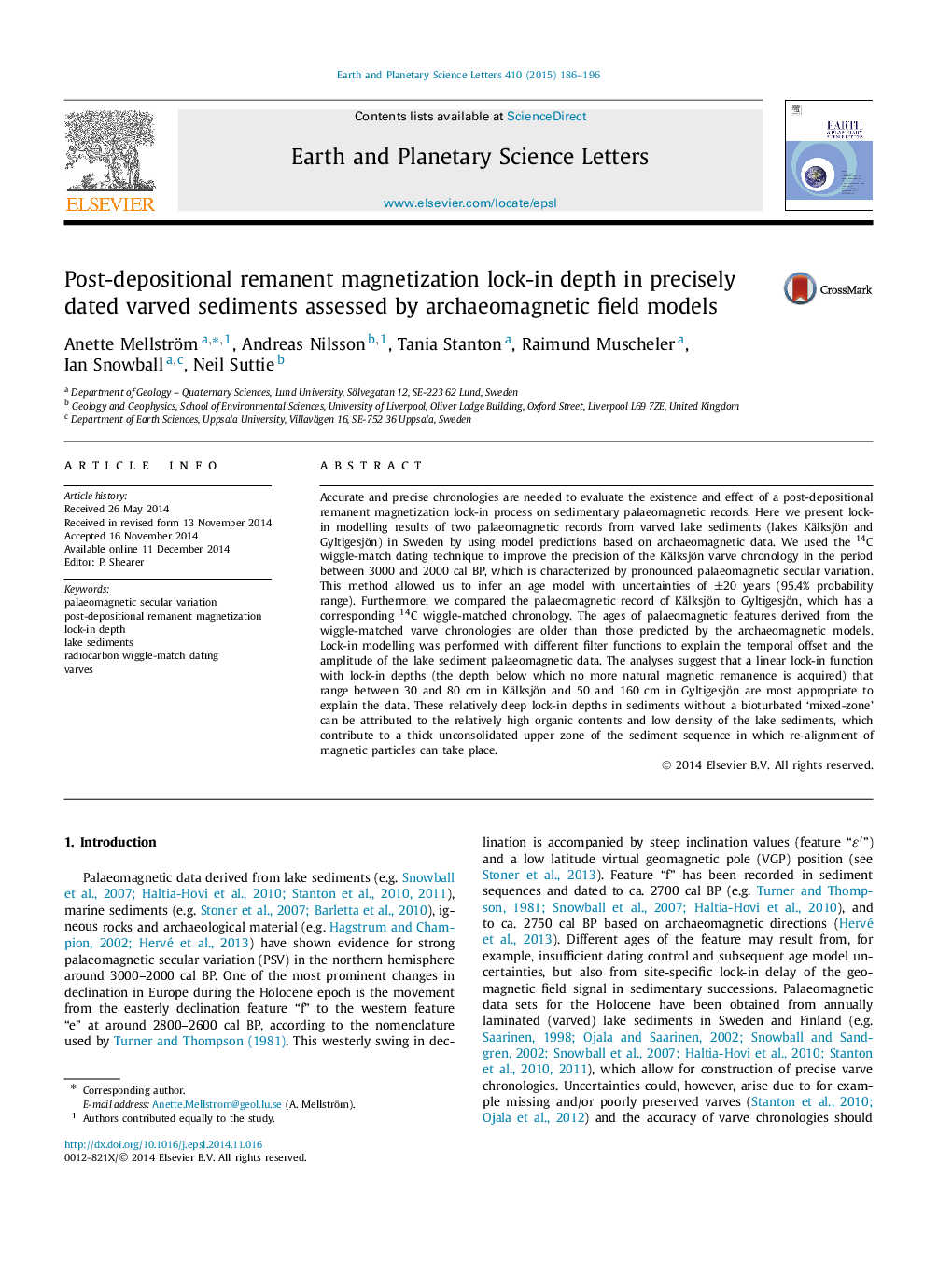| کد مقاله | کد نشریه | سال انتشار | مقاله انگلیسی | نسخه تمام متن |
|---|---|---|---|---|
| 6428468 | 1634746 | 2015 | 11 صفحه PDF | دانلود رایگان |
- Deep palaeomagnetic lock-in depth in varved lake sediments.
- Archaeomagnetic field model predictions compared to sedimentary data.
- Sedimentary palaeomagnetic data best explained by a linear lock-in function.
- Excellent time control through 14C wiggle-match dating of varved lake sediments.
Accurate and precise chronologies are needed to evaluate the existence and effect of a post-depositional remanent magnetization lock-in process on sedimentary palaeomagnetic records. Here we present lock-in modelling results of two palaeomagnetic records from varved lake sediments (lakes Kälksjön and Gyltigesjön) in Sweden by using model predictions based on archaeomagnetic data. We used the 14C wiggle-match dating technique to improve the precision of the Kälksjön varve chronology in the period between 3000 and 2000 cal BP, which is characterized by pronounced palaeomagnetic secular variation. This method allowed us to infer an age model with uncertainties of ±20 years (95.4% probability range). Furthermore, we compared the palaeomagnetic record of Kälksjön to Gyltigesjön, which has a corresponding 14C wiggle-matched chronology. The ages of palaeomagnetic features derived from the wiggle-matched varve chronologies are older than those predicted by the archaeomagnetic models. Lock-in modelling was performed with different filter functions to explain the temporal offset and the amplitude of the lake sediment palaeomagnetic data. The analyses suggest that a linear lock-in function with lock-in depths (the depth below which no more natural magnetic remanence is acquired) that range between 30 and 80 cm in Kälksjön and 50 and 160 cm in Gyltigesjön are most appropriate to explain the data. These relatively deep lock-in depths in sediments without a bioturbated 'mixed-zone' can be attributed to the relatively high organic contents and low density of the lake sediments, which contribute to a thick unconsolidated upper zone of the sediment sequence in which re-alignment of magnetic particles can take place.
Journal: Earth and Planetary Science Letters - Volume 410, 15 January 2015, Pages 186-196
